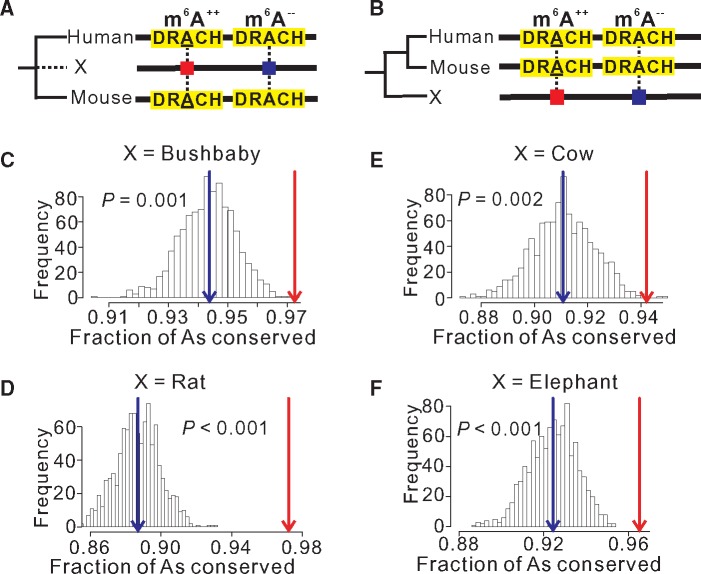Fig. 4.
Sites subject to m6A modification in both human and mouse (denoted as m6A++) are more likely to be conserved as As in a third species than As modified in neither human nor mouse (denoted as m6A−−). (A, B) A schematic diagram illustrating the comparison when the third species X is an ingroup (A) or outgroup (B) of the human–mouse clade. Mammalian m6A consensus motifs are highlighted in yellow. The underlined A indicates m6A modification. (C–F) Frequency distribution of the fraction of m6A−− sites conserved in the bushbaby (C), rat (D), cow (E), or elephant (F) in 1,000 random sets with the sample size equal to the number of m6A++ sites. Red and blue arrows respectively indicate the fraction of conserved m6A++ sites and the mean fraction of conserved m6A−− sites in 1,000 random sets. P-value is the fraction of the distribution on the right side of the red arrow.

